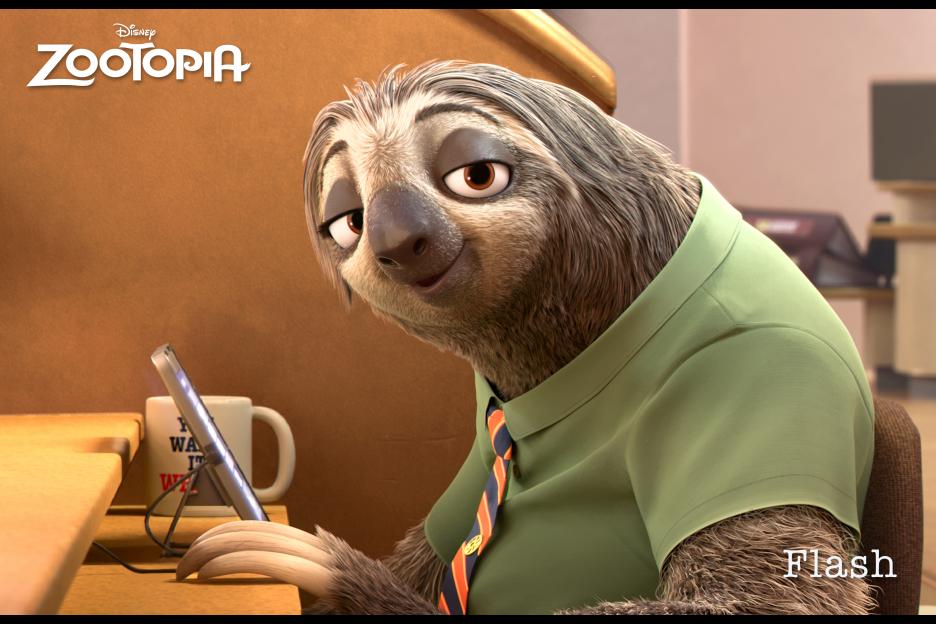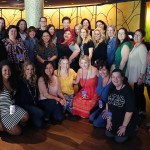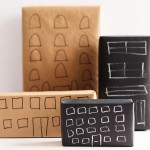We may earn money or products from the companies mentioned in this post. Please see policies for more information.
I was super excited to interview Byron Howard (worked on Tangled and Bolt) and Rich Moore (Wreck it Ralph) during our #ZootopiaEvent because I had a question I really wanted to ask them! They were SO nice and so warm and open with a room of mom bloggers that you’d think we were just at dinner having normal, natural conversation chatting about this awesome new film we just saw – Zootopia.
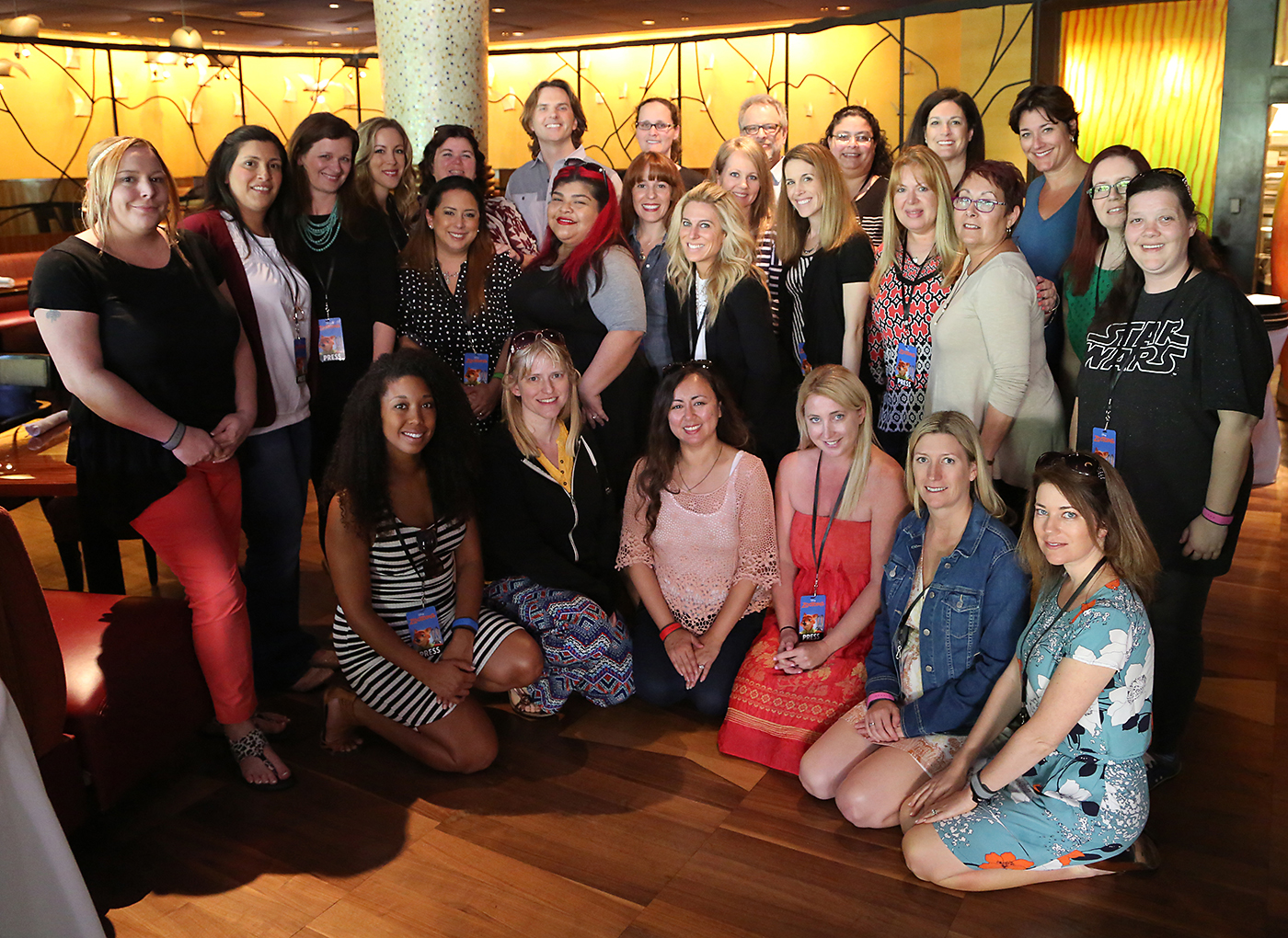
(Yes, that’s my head partially blocking Rich Moore – sorry Rich!)
As media we often get information on movies coming out in the future. Little bits and pieces of upcoming films or information of what they’re working on. This film looked SO interested to me when I first heard about it because I learned just how much research went into creating it. We got to watch a little video before our screening about Byron and Rich visiting Animal Kingdom at Walt Disney World around 3 years ago and there we were with them 3 years later!
Q: So, now that you’re here, it’s almost like you’ve come full circle. What is the experience like to know that you came here in the beginning and you’re finishing up here?
Byron: You’re right. It’s a lot like a, like a bookend.
Rich: The circle of life. It all works out, right?
Byron: I finally understand it now. That was very good, thank you. This was one of the first places that we came. Like after we pitched the idea of the movie, what we start with is research. The fact that this company has this amazing animal preserve, which is — honestly, it is the best in the world. Like if you look at the animals they’re in herds. They’re moving around these amazing environments that feel like real African environments and Asian environments. And the fact that we could take that real knowledge and these great animal experts and incorporate that knowledge into the film, it was amazing for us. And, so, we stopped here first. We went back to LA and told John Lassiter about our findings here, and he said, that’s amazing. But the next step you guys gotta do is actually go to real Africa and we’re like, Africa? And he’s like, Africa. And he sent us.
And we took 14 of our leadership over there. And when we landed in the Savannah of Africa we stepped out of these tiny bush planes. It felt like this (Animal Kingdom).
Africa was a life changing experience for us all. I think all of us came back honestly changed. We’re very fortunate with these jobs because they send us to terrific places all over Asia and Europe and South America. But Africa, for me, I had never been to any place like that, that kinda changed you down to your core. Because you’re stepping into an environment that has been the same for 40,000 years. I’d only been zoos where I’d seen like two zebra at a time. And then 30 feet away from us were 200 zebra. Or 50,000 wildebeest. 100,000 wildebeest. And being as close to lions as- as we are to you guys in the front row. And just to see nature, like full on nature right there. It really made us feel like, okay, if we’re gonna do this movie, we’re gonna do it right. And we came home just full of all this information and this great passion, for what we’re gonna create with Zootopia. And I think that’s why the crew dug in so much. We geeked out on all this stuff. And it came across, uh, in the film because all our crew cared so much.

They were telling us how much they all loved different anthropomorphic animal films like Robin Hood, Wind in the Willows and Jungle Book but they had never worked on one themselves and were excited because the technology is obviously SO different now. We have amazing CG where they can put great detail in to animal fur, claws and make them look like they do in real life (which is exactly what they did). And then the difficulty in the past of animal characters touching each other – what would their fur do, how would it react – it was such an impossible thing to realistically create until now.
Byron: If you look at Zootopia, it’s a very touchy movie. We touch each other each — the characters touch and interact with each other a lot. And they have fur and they have cloth. And they have fur on top of cloth.
Rich: Even to the idea of clothes interacting with fur to them was like, Oh, my God. It’s a big deal. But to their credit they really buckled down and said like, okay, we’re gonna figure this out, you know? The strangest things are a really kind of groundbreaking big deal to our tech department.
Q: Speaking of diversity, tolerance and acceptance, how do you tell that story so that it resonates with kids of all ages?
Rich: Well, I think that was very important to us that this wasn’t just an adult movie. That it was playing on some kinda lofty level that a child would be like, I’m not getting this at all. I don’t relate to it. It was important to us that Judy’s journey and her as a character – that a child could relate to her.
That’s why if this is a story about discrimination and being put in a box by other people then Judy has to have a moment where that happened to her. And that’s why we chose that it was at the hands of a bully when she was young. Because, unfortunately, I think that adults and children can relate to those moments. I think that all of us have had those moments, some more than others, but it’s relatable. So, that’s why we chose to have that happen to her as a child. It became very relatable to both a child and an adult of what this movie was about.
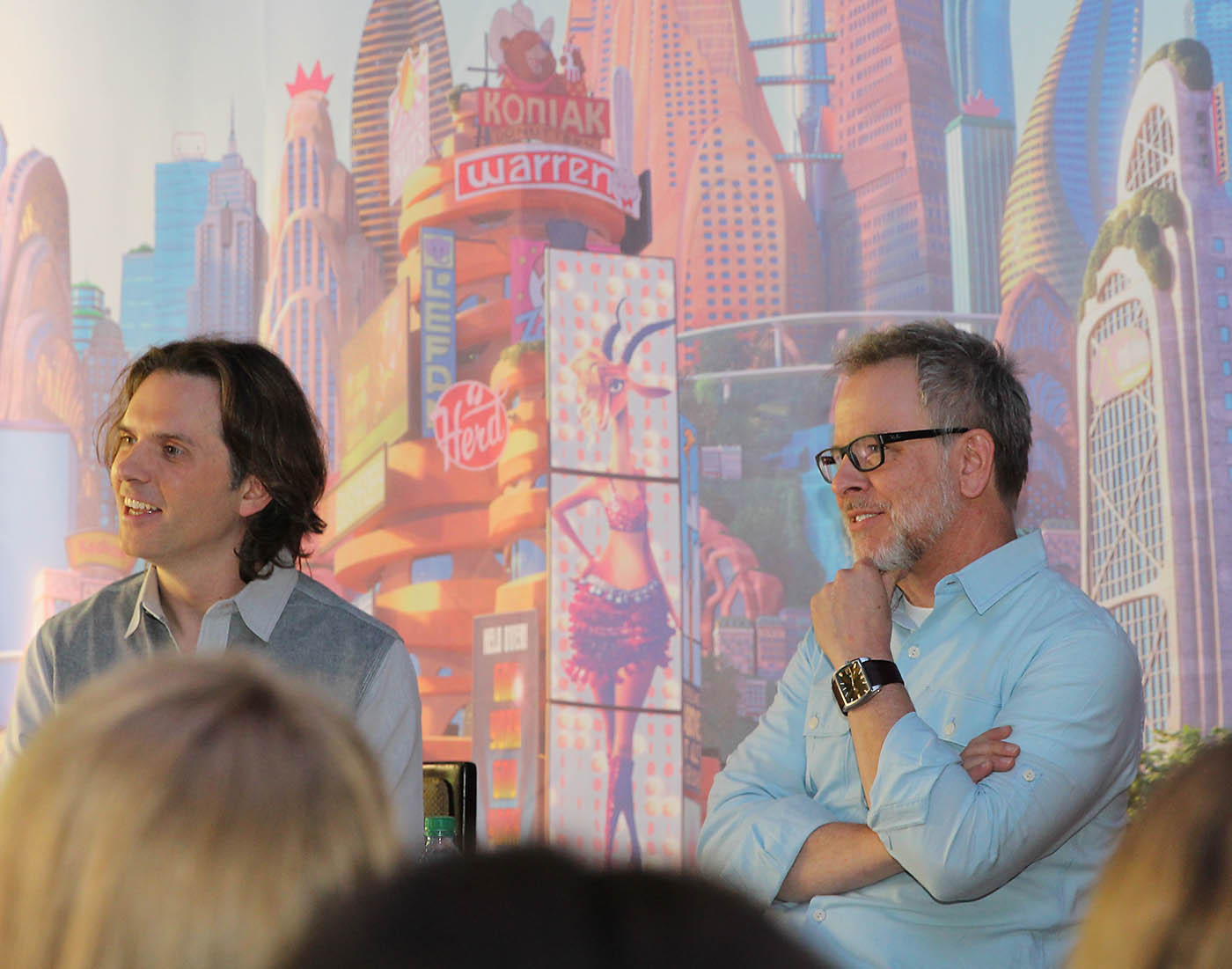
My Question: What animal was the most difficult to anthropomorphize?
Byron: That’s a good question. There were a lot of them that were challenging. Even Judy’s landlord, who’s an armadillo. It was a question of how does that character get her clothes on? Over the shell?
Rich: Did it have to go under the shell? Does it go over the shell? Does she just kinda look like a strange hunchback
Byron: So, that’s what makes the armadillo. (so they left the shell on the outside – make sure to look for her when Judy moves to the city).
We chatted a bit about choosing animals that would work in stereotypical roles (like the sloths for the DMV) and how that would relate to all countries the film was shown in. And then we asked how they got Kristen Bell to play a sloth (she has like 2 words in the whole film but if you don’t know her story with sloths check out this clip from Ellen). They were worried about asking KRISTEN BELL to play a character with 2 words, in the end it came down to a simple text and she was in lol!
Speaking of the sloth scene (which you can watch below) I loved this story:
Byron: A real quick story, ‘cause we’re talking about seeing that scene around the world and we had a really nice experience in Belgium. ‘Cause they showed it in Belgium French and also Belgium Flemish. When we were watching the Flemish audience watch the DMV scene and there was this father and this little boy. And the father, watching the Flemish movie, was cracking up at the sloths and the DMV. And his little boy was watching his dad and he’s smiling seeing his dad crack up at this scene. So, even the little boy who was like four, didn’t get the scene, e was getting such a kick out of watching his dad crack up. It was just the sweetest thing.
Q: What made you really want to appeal on so many levels? Because there’s just so many fun levels for adults and kids.
Rich: Thank you for that.
Byron: Yeah, thank you very much. Yeah, I think we tried to include as many of the audience as possible. ‘Cause we’re adults making these movies. And we…
Rich: It’s rumored. Yeah, on- on the outside.
Byron: Yeah, we’re kinda children inside. But the kids aren’t necessarily gonna laugh at the breaking bed reference. Or the Godfather reference. But the adults get it. And it’s funny, ‘cause when Rich and I watch audiences see the film, we can kinda predict when the adults will laugh and when the kids will laugh. And to hear the giggles when the Godfather turns around in the chair, or when we mention Jessie and Walter…
Rich: And I think that it’s what I loved growing up were shows or movies or cartoons or books or — where I knew I was enjoying it. But I knew that my brother was getting it on some level. And that my parents were laughing at something. And it made me feel like, well, someday I’ll get that. Whatever it is that they’re getting – but I’m getting my thing, you know?
And then as an adult to go to movies with my kids, and when the film makers where giving my children something and that it didn’t feel like they were speaking down to me or down to my kids. That there was something in it for me in it, too. I’m just always like that. And everything I’ve ever worked on in my career, I always try to kind of give service to everyone in the audience. Not just one group of people. So, that’s what we do.
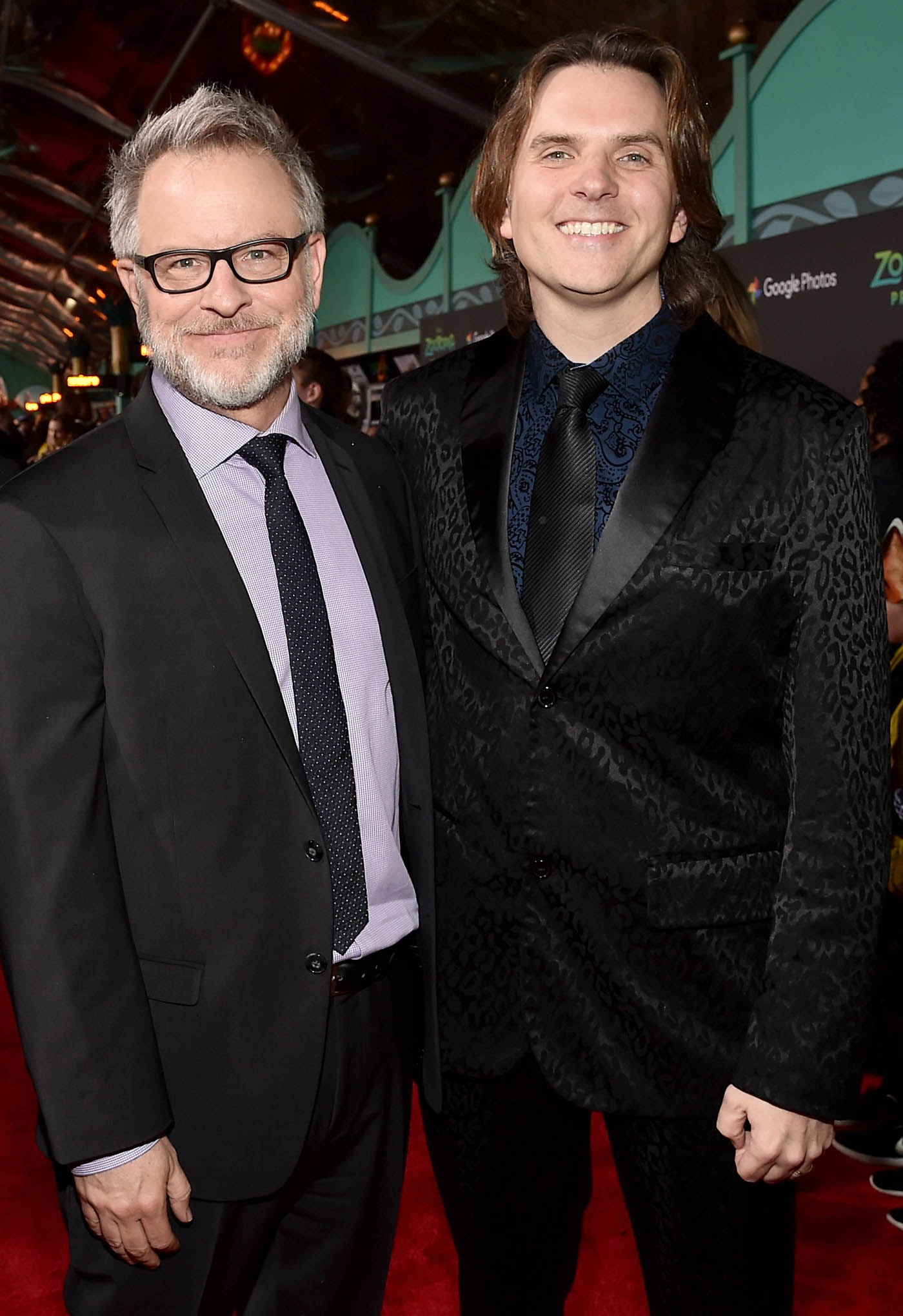
Talking with these two made me love the movie that much more. Hearing how much research and time went into creating a film that everyone could love and appreciate was so neat!
Are you ready to see Zootopia yet?!
Zootopia is in theaters Friday March 4th in 3D!
“The modern mammal metropolis of Zootopia is a city like no other. Comprised of habitat neighborhoods like ritzy Sahara Square and frigid Tundratown, it’s a melting pot where animals from every environment live together—a place where no matter what you are, from the biggest elephant to the smallest shrew, you can be anything. But when rookie Officer Judy Hopps (voice of Ginnifer Goodwin) arrives, she discovers that being the first bunny on a police force of big, tough animals isn’t so easy. Determined to prove herself, she jumps at the opportunity to crack a case, even if it means partnering with a fast-talking, scam-artist fox, Nick Wilde (voice of Jason Bateman), to solve the mystery. Walt Disney Animation Studios’ “Zootopia,” a comedy-adventure directed by Byron Howard (“Tangled,” “Bolt”) and Rich Moore (“Wreck-It Ralph,” “The Simpsons”) and co-directed by Jared Bush (“Penn Zero: Part-Time Hero”)”
For more information, check out the website at http://movies.disney.com/


